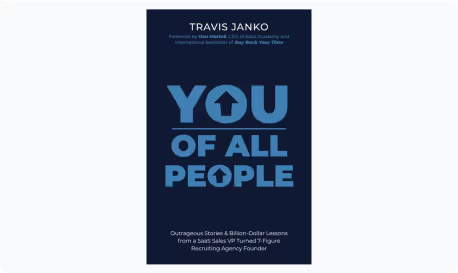Several years ago, I had the privilege of learning some invaluable lessons about effective communication from Lindsey Cohen, our Communications Director at Visible. These lessons have had a lasting impact on me, and I be...


Several years ago, I had the privilege of learning some invaluable lessons about effective communication from Lindsey Cohen, our Communications Director at Visible. These lessons have had a lasting impact on me, and I believe they can benefit others as well.
1. Tips for Effective Delivery
Your Voice is Your Strongest Tool: Don't underestimate the power of your voice. When speaking, stand up straight and modulate your tone to keep your audience engaged. A monotonous voice can quickly lose listeners' attention.
Sharpen Your Presence, Especially on Video: In the age of virtual meetings, it's crucial to present yourself well on video. Make sure your shoulders and head are visible in the frame. This conveys professionalism and ensures that your facial expressions and body language are clear.
Understand and Correct Your Crutch Words and Behaviors: We all have verbal tics and nervous habits that can detract from our message. Identify your crutch words and any repetitive movements you make, and consciously work to eliminate them.
Practice speaking in front of a mirror or recording yourself to become more aware of these tendencies.
Be an Active Listener: Communication is a two-way street. Pay close attention to what others are saying, and respond thoughtfully. This shows respect and fosters a more productive dialogue.
Practice, Practice, Practice: The key to delivering a memorable message is preparation. Practice your delivery multiple times to ensure you're comfortable with the material and can present it confidently. The more you practice, the more natural and impactful your delivery will be.
2. Preparing for a Speech or Presentation
Determine Your Story and Headline: Before you start writing, decide what story you want to tell and what your main message is. Craft a compelling headline or hook that will grab your audience's attention from the outset.
Write, Edit, and Convert: Begin by writing out your speech in full. This will help you organize your thoughts and ensure you haven't missed any key points. Then, edit your draft carefully to refine the language and tighten the structure. Finally, convert your written speech into a clear and concise presentation that supports your message visually.
Read and Learn from Others: Research how other speakers in your field are presenting their ideas. Pay attention to their techniques and delivery styles. Don't be afraid to borrow effective strategies and adapt them to your own presentation style.
By incorporating these lessons into your communication practices, you can become a more effective and engaging speaker. Remember that communication is a skill that can be continuously improved with practice and dedication.
By Angie Janko, COO of GSD Coach & Recruiting, helping SaaS founders build the top 5% of talent, FAST!
Get more expert advice for SaaS founders on sales hiring, recruiting strategies, team leadership, and building high-performing sales teams.


Get started today with a free, no-obligation discovery call. Just fill out the form and share your revenue goals. We’ll be in touch within 24 business hours to show you how our proven systems can accelerate your hiring process.
.avif)


Our proven methodology has helped SaaS companies across every growth stage build revenue teams that drive predictable, scalable results. Connect with us to discover how we can accelerate your hiring process and deliver the A-Player talent your company needs to reach its next milestone.